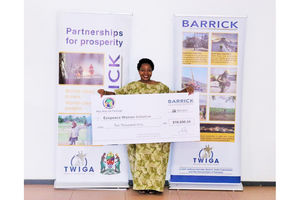Nelson Mandela: The failed vision of a united Africa
Nelson Rolihlahla Madiba Mandela was a South African pan-African, anti-Apartheid revolutionary and politician who waged a long struggle for freedom that made him stay in prison for 27 years.
Mandela prophetic leadership eventually freed his people from the apartheid bondage in 1994 and he served as President of the African National Congress (ANC) party from 1991 to 1997 and the President of South Africa from 1994 to 1999.
Mandela was a benevolent person who is considered by many as the founding Father of South African democracy and a Pan-African icon. Due to his unbending belief in racial reconciliation to overcome apartheid, he will always be revered by Africa and the whole world as a moral authority of truth.
The winner of the 1993 Nobel Peace Prize, will permanently be regarded as a symbol of peace and hope for many across the African Continent and the World as whole.
In a series of articles we will feature Nelson Mandela a world leader and an icon of freedom fighting against imperialism and apartheid in South Africa and the African continent. We will also highlight his pan-African traits that made Africa a proud continent that inch by inch was and will be moving towards unification.
Nelson Mandela was born, on the 18th July 1918 in the village of Mvezo in Umtatu, in the Cape Province; Eastern Cape, in the British South Africa. When Mandela was born he was given the forename of Rolihlahla and he later became known by his clan name Madiba.
The name Mandela was a King’s genealogy name of his family. Mandela belonged to the Thembu royal family of a Xhosa tribe of the Thembuland. His father, Gadla Henry Mphakanyiswa Mandela, was a local chief from 1915 in the Mqhekezweni kingdom.
In 1925 Mandela was enrolled at a local Methodist Primary School for his primary education. At the first day at School Mandela was given the English forename of “Nelson” by his teacher. At this Methodist mission school he studied English, Xhosa, History and Geography.
Mandela completed his primary education in 1932 and began his secondary education in 1933 at the Clarkebury Methodist High School the largest school for black Africans in Engcobo; Thembuland.
At the High School; Mandela completed his Junior Certificate and in 1937 moved to Healdtown, the Methodist College in Fort Beaufort that was attended by most Thembuland royalty.
In 1939 Mandela began his University Education at the Fort Hare, University in an elite black institution in Alice, Eastern Cape to pursue a BA degree where he and other royalty were educated at the time. Mandela studied English, Anthropology, Politics, Native Administration, and Roman Dutch law. He was then involved in the Students’ Representative Council boycott for which he was suspended from the university in 1940.
On his return home to the Mqhekezweni kingdom, the King was angry expulsion from the university and wanted to arrange a marriage for him. This made him ran away from Thembuland to Johannesburg in 1941.
Mandela found work as a night watchman at Crown Mines in Johannesburg. He later met the ANC activist Walter Sisulu who secured Mandela another job as an articled clerk in a law firm.
At the same time Mandela signed up to a University of South Africa where in 1942 he received a Bachelor of Arts (BA) degree in law.
In Early 1943, Mandela began studying law at the University of the Witwatersrand, where he was the only black African student and faced racism head-on. Having befriended liberal and communist European, Jewish, and Indian students, he became increasingly politicized and became a freedom fighter.
Mandela failed his final year at Witwatersrand three times; he was ultimately denied his degree in December 1949 and expelled from the University.
Dr Kafumu is the Member of Parliament for Igunga Constituency



